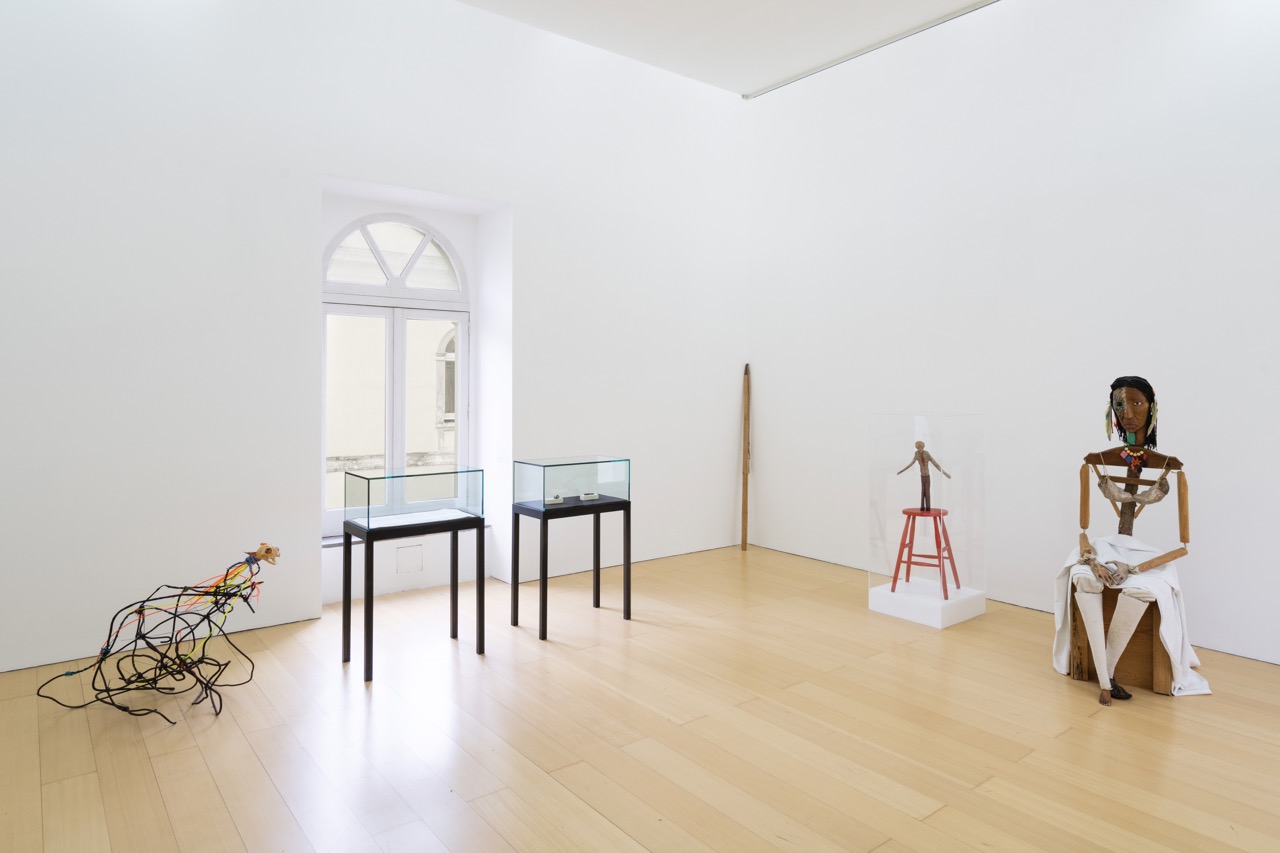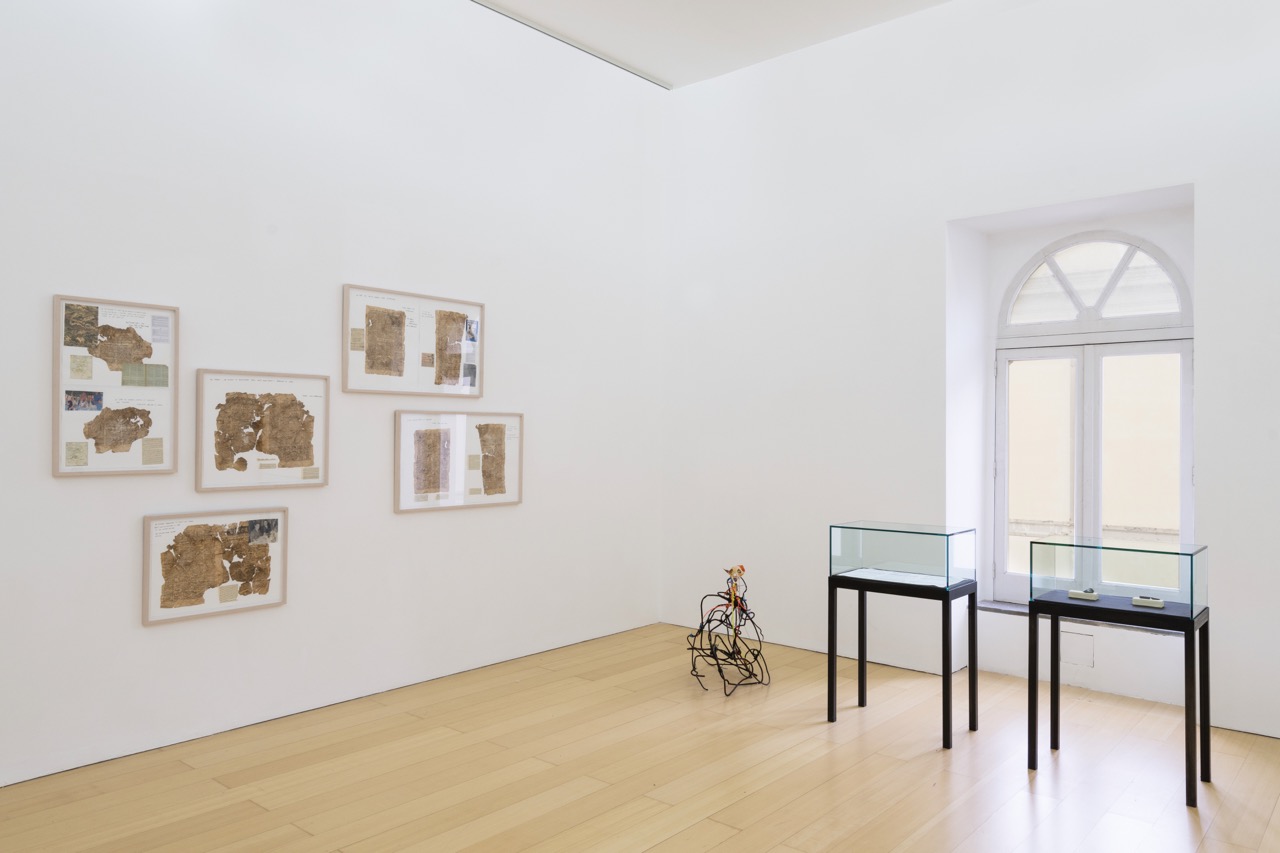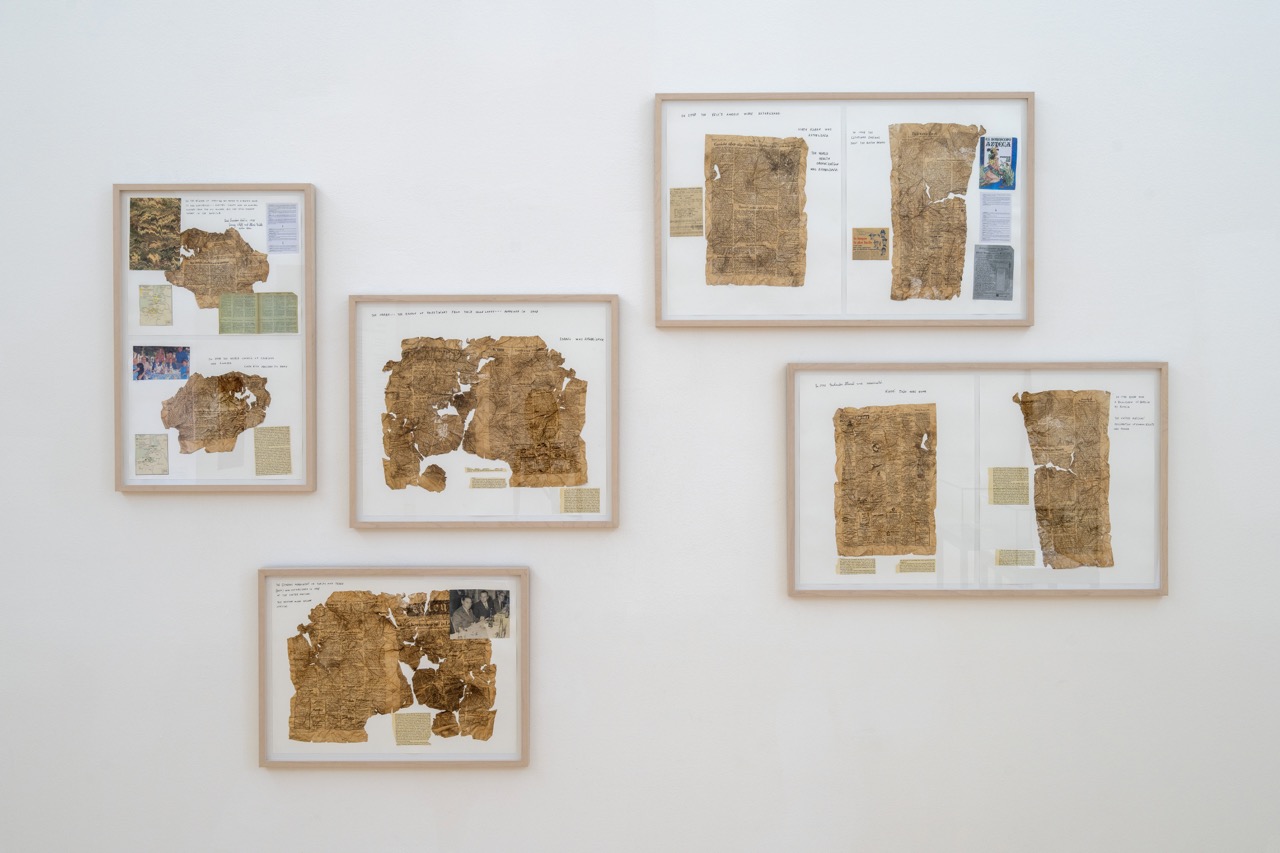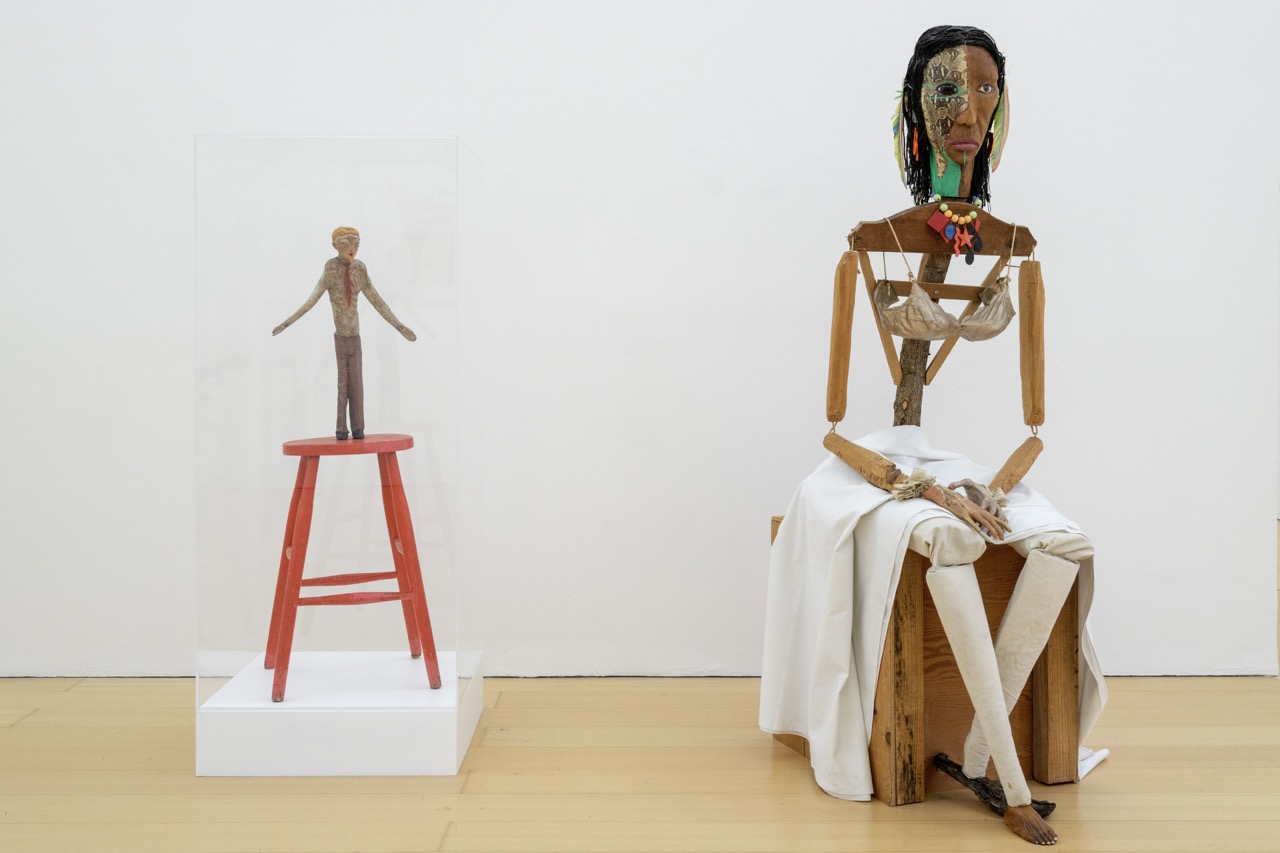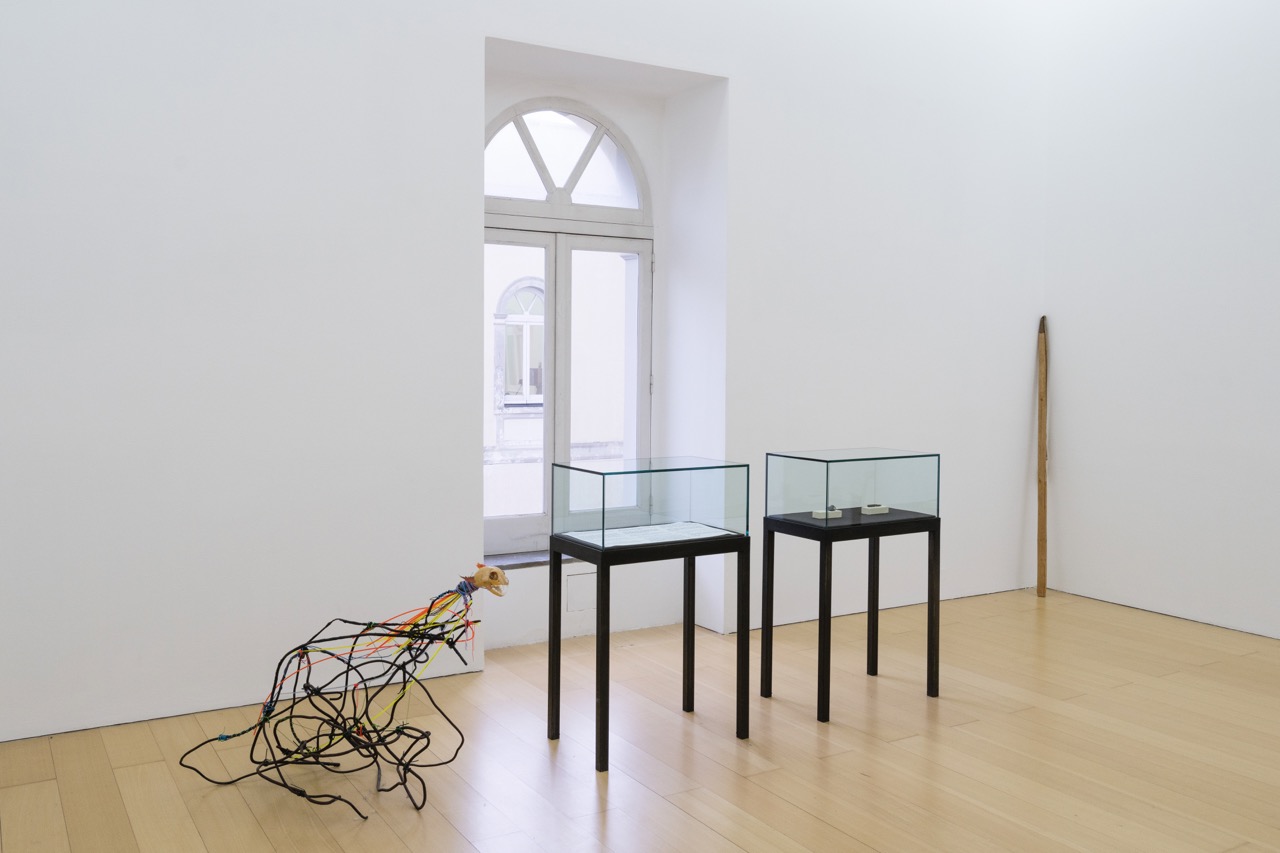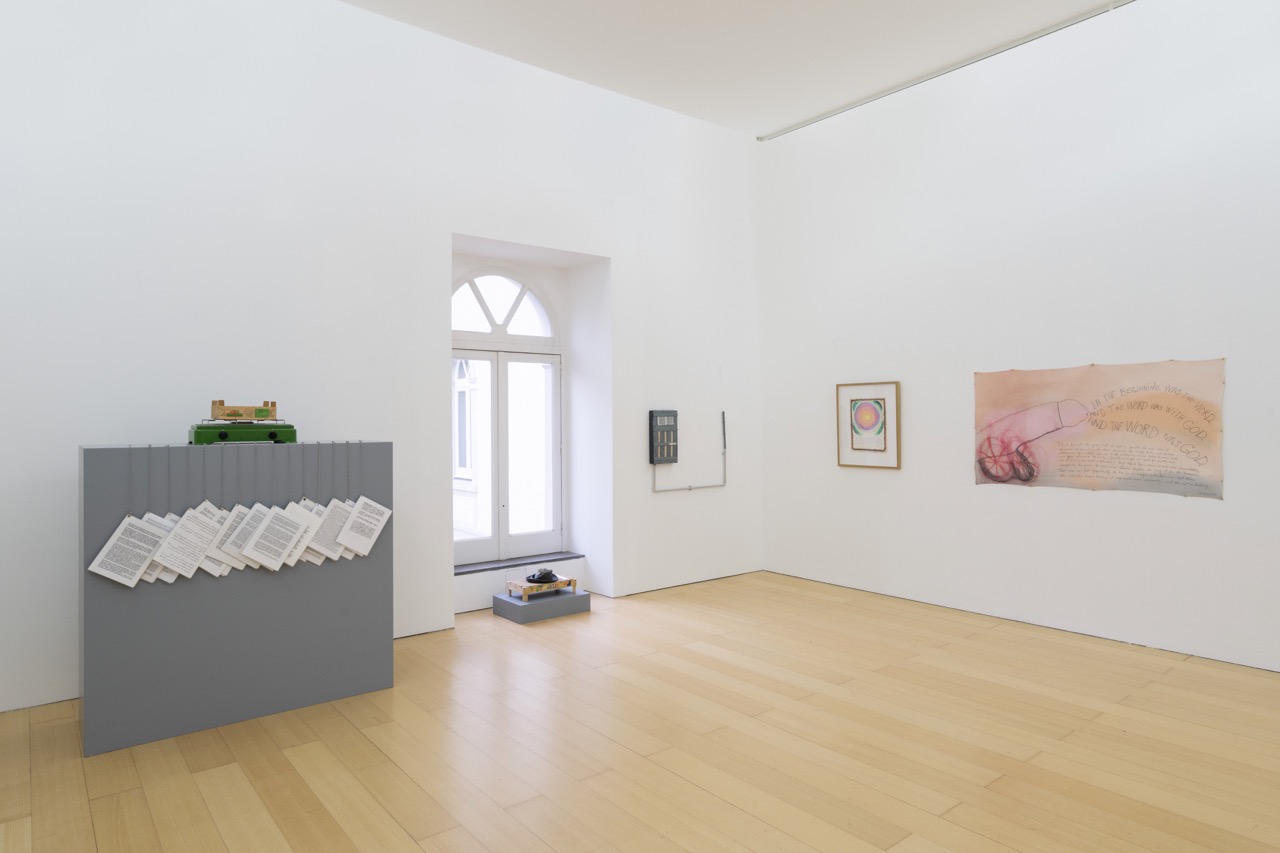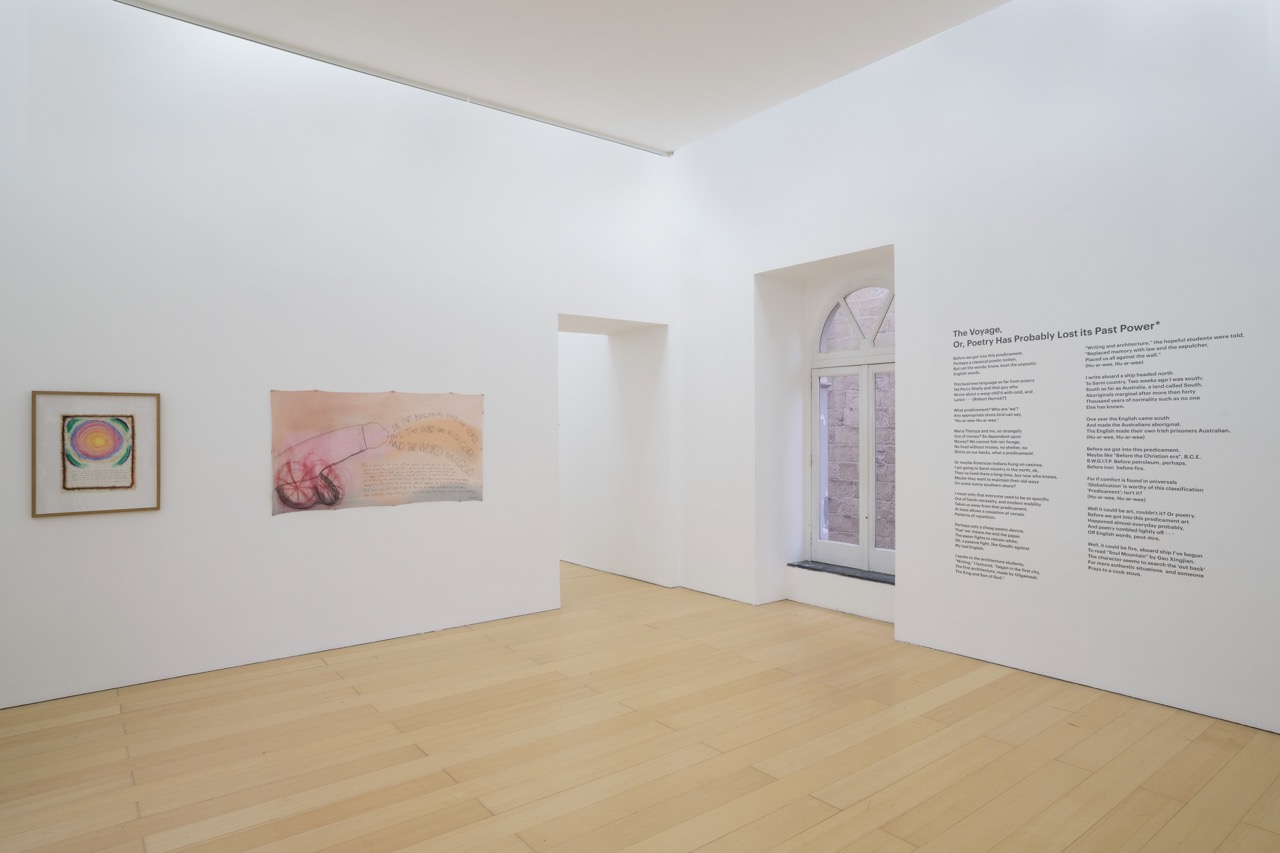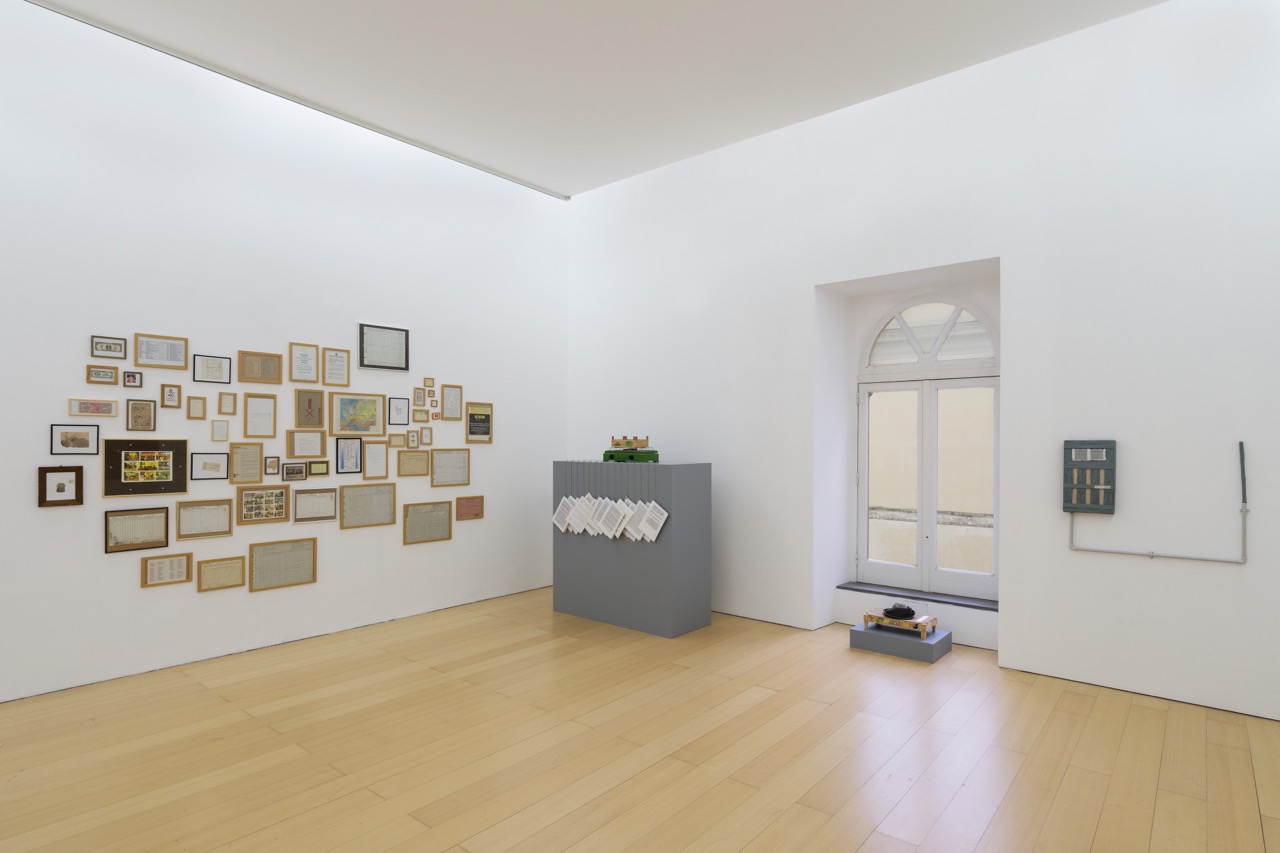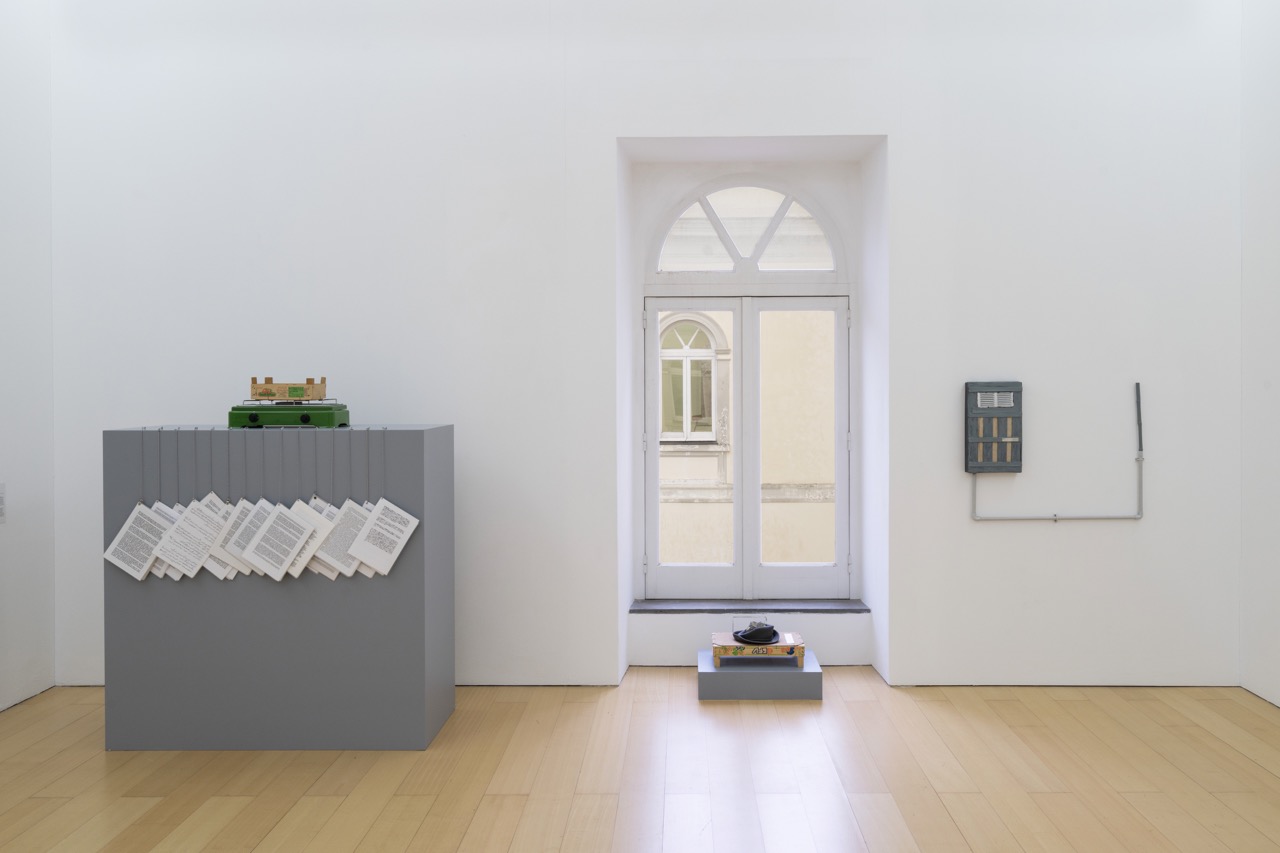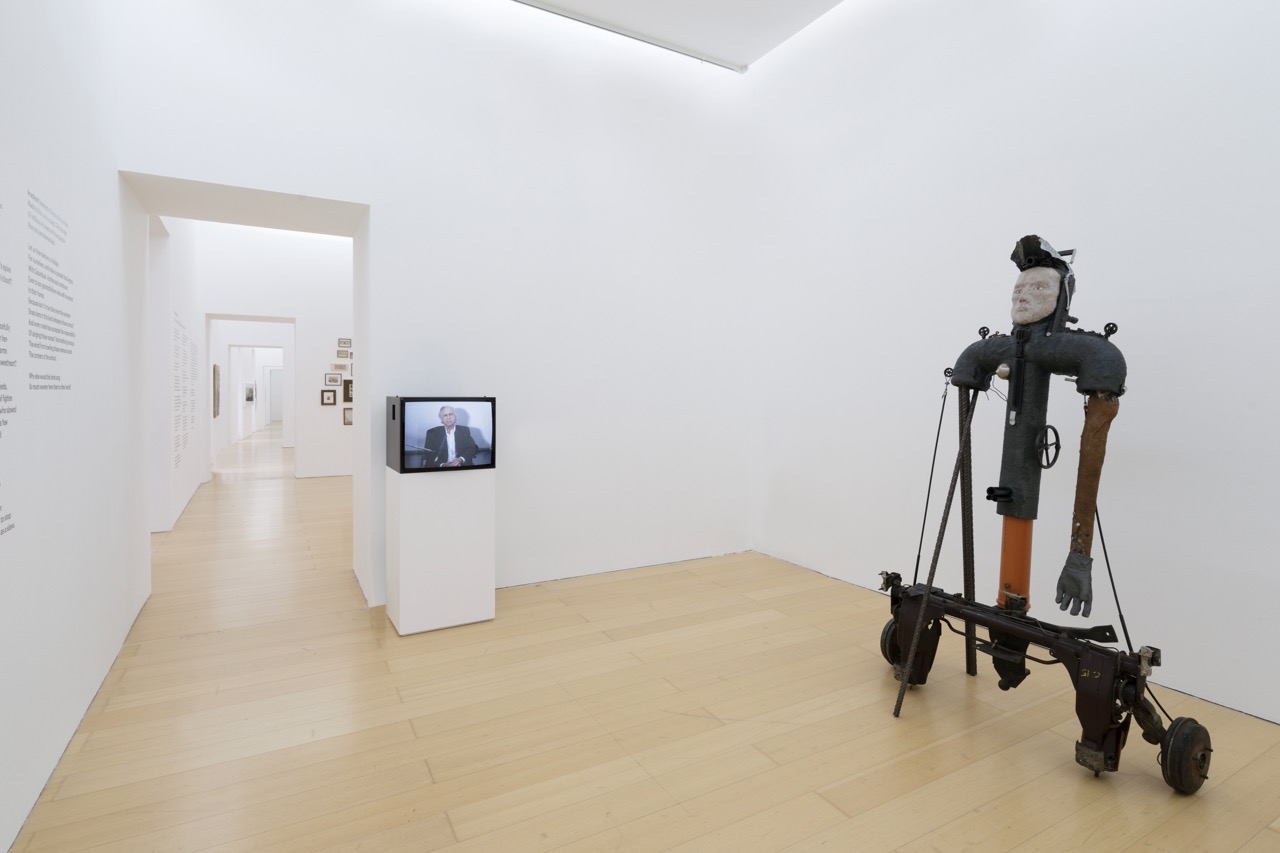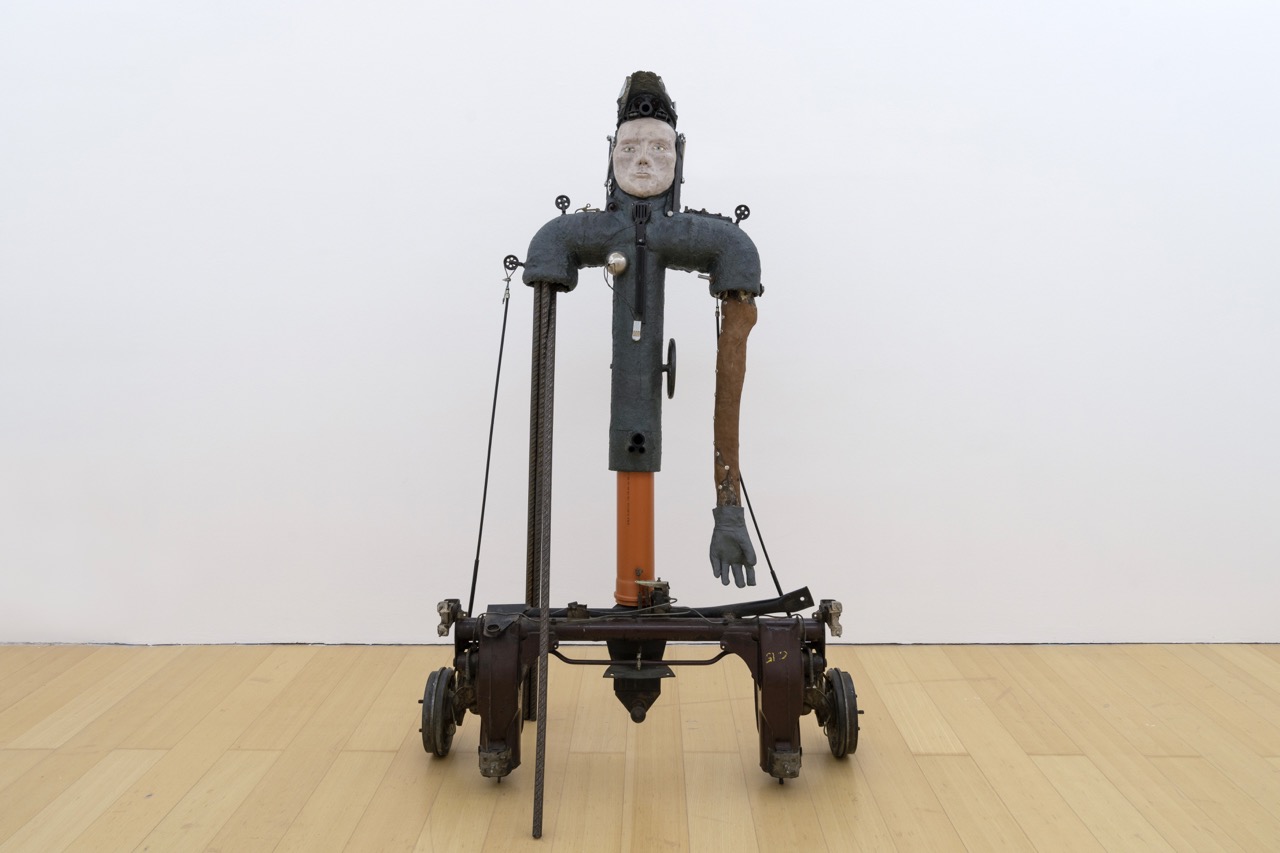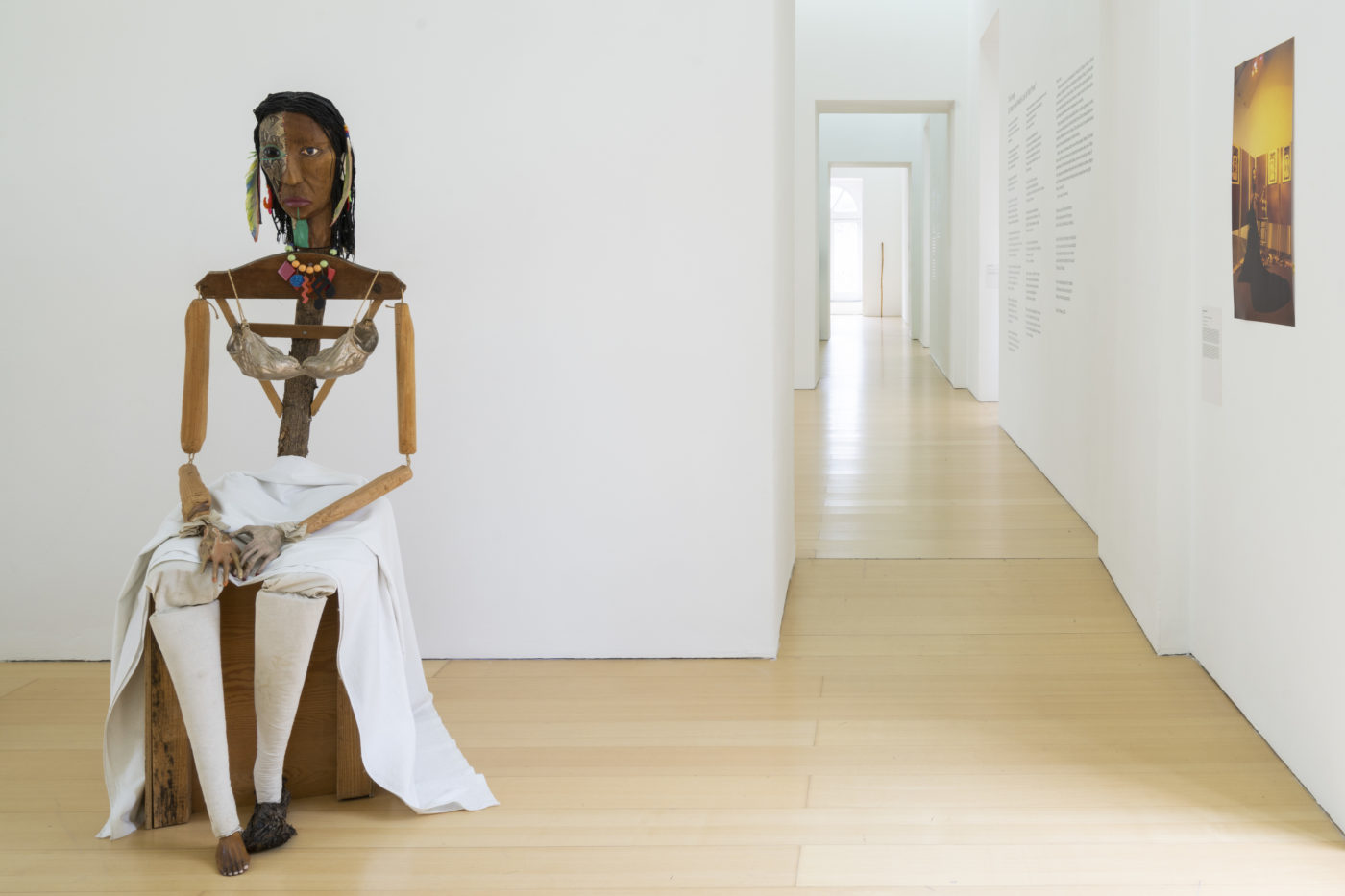A sequence of rooms draws parallels between Durham’s deconstruction of European imperialism and his investigation of the representation of First Peoples in the United States. In the work The history of Europe (2012), produced for dOCUMENTA (13), Durham analyses Europe variously as a continent and a self-proclaimed political entity, rebaptizing it as ‘Eurasia’, according to its actual geological landmass, whilst observing, through a loose narration of disparate historical occurrences, how the large ‘peninsula’ is a completely invented political entity. Such interruptions of the grand historical narratives that have fed the establishment of nation states and of the Americas, point to the complexity of Indigenous histories that have been entangled, for the past five hundred years, with that of Europeans. These historical accounts are framed by two sculptures. Malinche (1988-92), evokes the story of Malintzin (ca. 1500 – 1529), a Nahua woman living at the time of the Spanish conquest of the Aztec Empire (1519–1521), who was mythologized as a traitor to her people for having served as an interpreter and lover of the Spanish Conquistador Hernán Cortés. The other work, The two Johns (1988), alludes to two English settlers colonizers John Smith (1580 –1631) and John Rolfe (1585 –1622), that played key roles in shaping the legend of Pocahontas, another indigenous woman mythologized for having collaborated with settlers. In fact, prior to become Malinche, an earlier version of the same sculpture called ‘Pocahontas’ was presented for the first time at Matt’s Gallery in London, in the show ‘Mataoka Ake Attakulakula Anel Guledisgo Hnihi (Pocahontas and the Little Carpenter, 1988)’, next to The two Johns. As Durham puts it: ‘the myth of Pocahontas and John Smith became an important operant in the construction of America, and had its counterparts all over the hemisphere. In Brazil the story is told about a woman named Iragema; in Mexico, Malinche’.
The sculptures Malinche and Cortez (1991-92) speak to histories of European imperialism which remain silenced in narratives of the Golden Age and the Industrial Revolution. Further commentary on how the building of modern economic relationships depends upon the development of particular extractive forms in regard to men and women’s labour, both productive and reproductive, is unfolded across the works in the next rooms. A constellation of flyers, handwritten notes, bills and scraps of paper, individually framed and hung on the wall, A Street Level Treatise on Money and Work (2005) alludes to A Treatise on Money (1930) by John Maynard Keynes. The street and the evidence of macro and micro exchanges that occur in it, become the lens for Durham’s playful analysis of labour and economics. The elements used in the collage Socrates (2013) were found in the space where he worked in Naples, previously a leather workshop in the Lanificio complex near the Madre museum. The old newspapers and scraps of leather testify to Durham’s quotidian archaeology, that gave fine attention to found materials which could speak to particular histories, in this case spanning from the industrial past of this former textile factory established in 1824 during the Realm of Two Sicilies to produce army uniforms, up until its artisanal present. The title of the work alludes to the Brazilian football player, Sócrates Brasileiro Sampaio de Souza Vieira de Oliveira (1954 – 2011) mentioned in one of the newspaper clippings, also known as a political activist opposing the right-wing military dictatorship governing Brazil.
Jimmie Durham: humanity is not a completed project, installation view of the exhibition at the Madre museum, 2023. Photo by Amedeo Benestante
